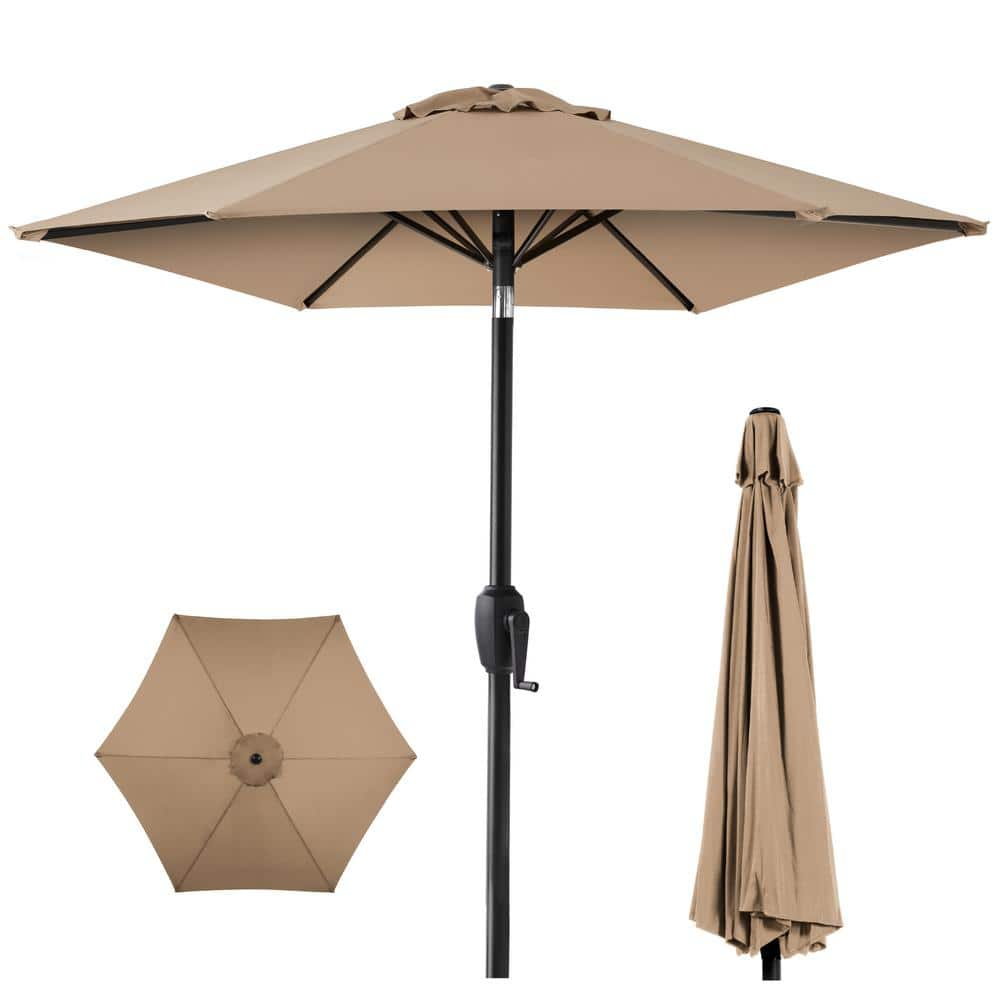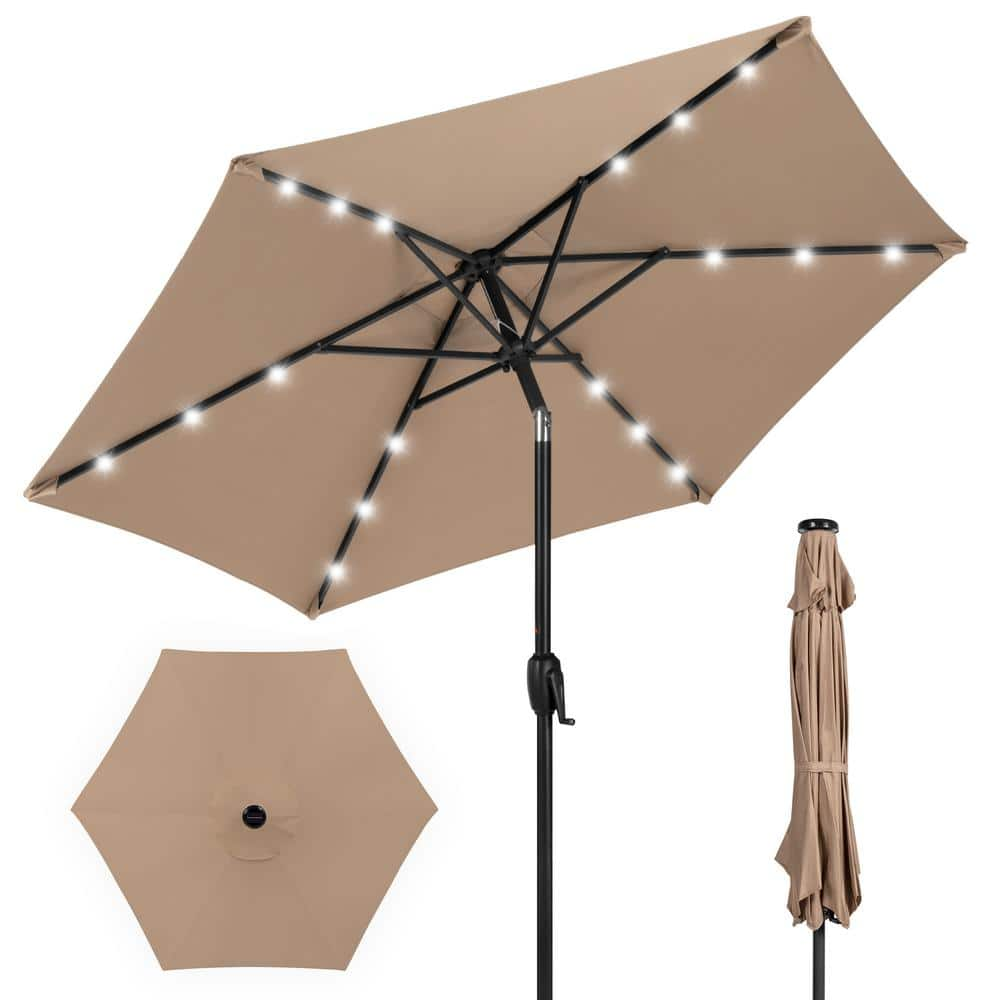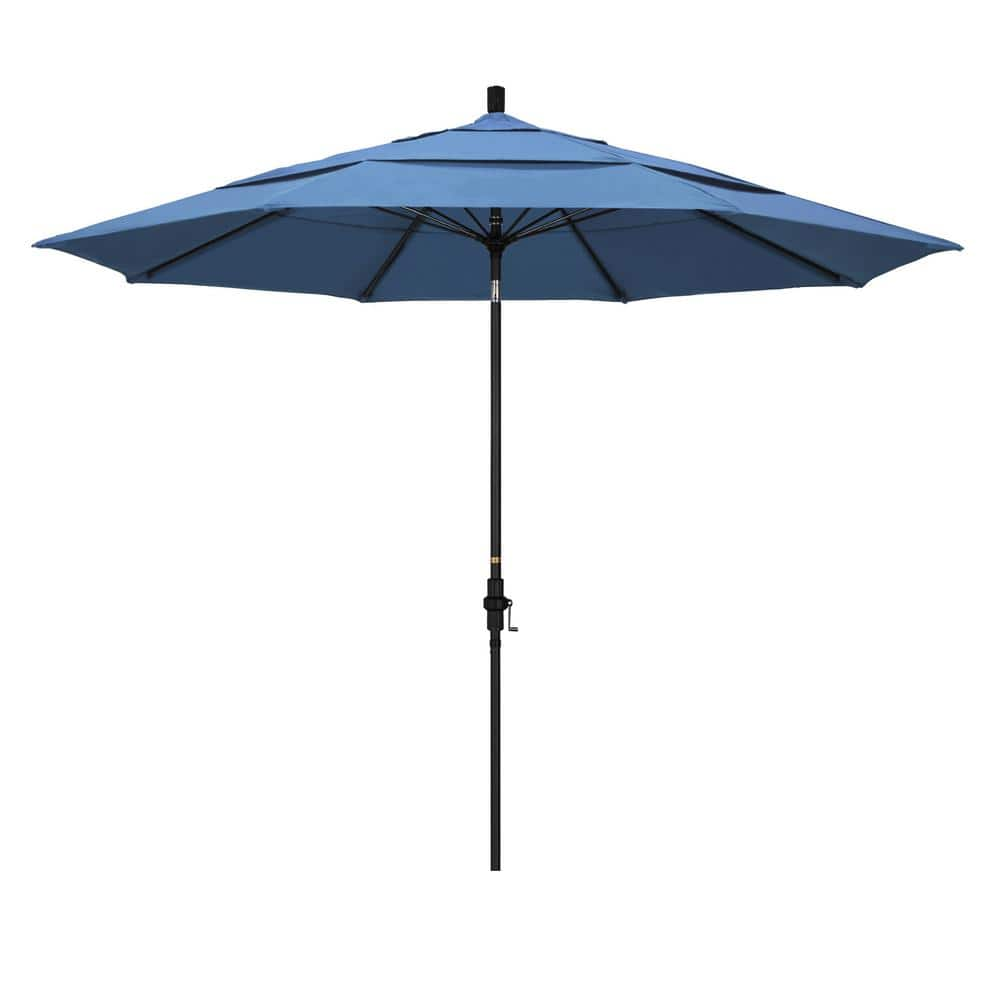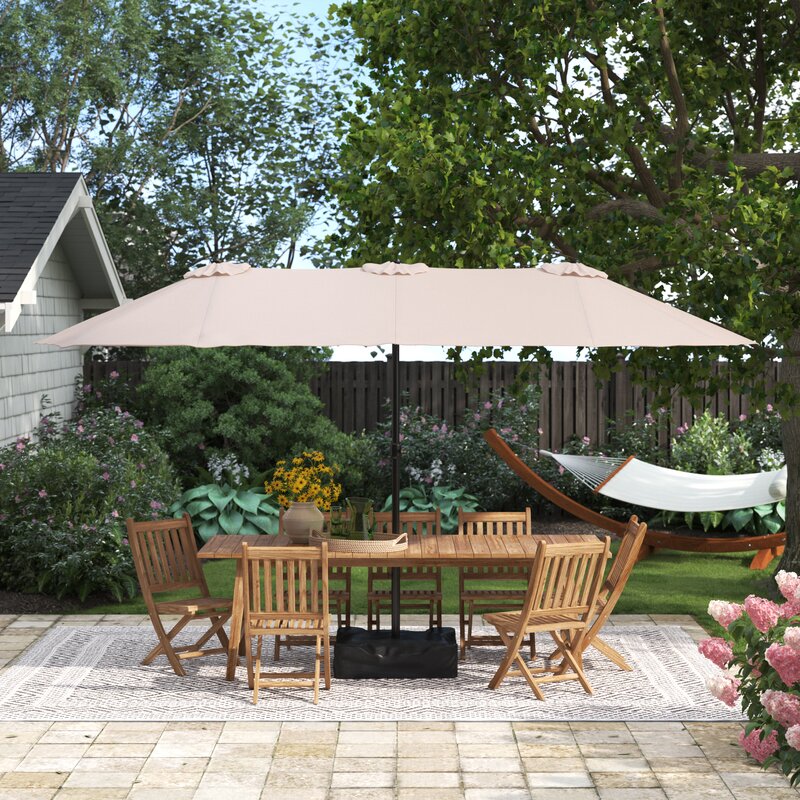- Dimensions: 11 feet (diameter) x 9 feet 5 inches (height) x 11 feet 9 inches (depth)
- Materials: Olefin and aluminum
- Color options: Putty, midnight, chili red
- Price: $599
The Best Patio Umbrellas: 8 Designer-Approved Options for Your Backyard

Our evaluations and opinions are not influenced by our advertising relationships, but we may earn a commission from our partners’ links. This content is created by TIME Stamped, under TIME’s direction and produced in accordance with TIME’s editorial guidelines and overseen by TIME’s editorial staff. Learn more about it.
Whether you’re dining al fresco, entertaining guests, or enjoying your outdoor oasis, the right patio umbrella not only looks great with your outdoor decor, it also shades you from the sun’s harsh rays. “It's important to understand that umbrellas tend to spend the entire year outside. Investing in a quality outdoor umbrella is not that different from choosing a quality roofing material,” says Peter Spalding, interior designer and co-founder of the designer marketplace Daniel House Club. “You want cleanable fabrics that hold to intense UV exposure, and the mechanisms should be easy to operate, too.”
To decide which is the right patio umbrella for you, we’ve rounded up the top nine styles that work great in every outdoor space.

This cantilever umbrella has received thousands of reviews for looking great but also for being durable. It can be set up quickly with the crank lift system. The umbrella even comes with solar powered LED lights to create some ambiance when the sun goes down. The canopy fabric is weather-resistant and the base is made from a rust-resistant aluminum, so you can use the umbrella year after year.
This attractive umbrella is easy to set up, and its solar powered LED lights make it a top choice for use in the evenings, too.

A great umbrella that won’t break the bank, this option adds a pop of color to your patio. The umbrella has a hand-operated crank open-and-close system for easy operation, and you can adjust the canopy 45 degrees to block the sun’s rays. A wind vent at the top creates a breeze to keep you cool, while helping to keep the umbrella stable in heavy winds.
This affordably priced umbrella includes desirable features like a wind vent and the ability to tilt, making it a versatile choice for your patio or deck.
/https://static.havenly.com/product/production/md5_a677a18806d65b883bba6fa68c470091.jpeg)
For a premium umbrella that is worth the splurge, check out this selection from Pottery Barn. Not only does the umbrella come in over 25 colors, the materials like the brass joint caps and ribs ensure the umbrella looks beautiful year after year. This umbrella is an investment, but if you spend a lot of time outside, it’s worth it.
When you buy this made-to-order umbrella, you can choose from over 25 colors and enjoy a top-quality product designed to last for years.

This umbrella can brighten up any outdoor space with the string of solar powered lights attached to the inside of the umbrella and the fun fabric color options. From sky blue to burgundy to green, you’ll find a hue that works in your outdoor space. The umbrella has a pulley-assisted crank system to open and close the umbrella, as well as a push-button tilt feature.
With the attached solar lights, this umbrella is perfect for use in both the day and evening, plus there are no cords to worry about.

A vented umbrella allows air to pass through so when it's windy outside, your umbrella can be stronger and less prone to toppling over or being overturned. This vented option from California Umbrella is our pick for best vented and because of its durability and style. Plus you can choose from over 20 colors.
If you often experience wind, this vented umbrella is a sturdier choice, plus it's available in over 20 colors to match your patio.

Sometimes a regular-sized umbrella just doesn’t offer enough shade. If your backyard space needs more shade, upgrade to this extra large patio umbrella. Measuring in at a whopping 15 feet by 9 feet, you can cover extra large tables or several lounge chairs with just one of these umbrellas.
Measuring 15 feet wide, this oversized umbrella covers an extra long space and is ideal for large backyards.

This umbrella’s 11-foot span makes it ideal for use over deck chairs or tables, and the included base offers excellent stability once you fill it with sand. The offset design offers coverage without having to position the umbrella right in the middle of your patio, so you’ll enjoy plenty of flexibility to find the layout that best works for your space.
This umbrella’s offset design gives you plenty of positioning options, and the included base provides excellent stability.
I spoke with our expert, Peter Spalding, about what to look for in a patio umbrella and how to choose the best umbrella for varying needs and budgets. I also considered his recommendations for the best patio umbrellas.
In choosing the best patio umbrellas, I looked for umbrellas with desirable features. I considered the durability of the canopy material, including whether it’s UV-resistant and weather-resistant. I also looked for the use of durable materials like powder-coated steel in the pole and frame.
Additionally, I selected patio umbrellas with features that enhance their use, including a tilt function and open-close mechanism that are easy to use, integrated lighting, and ventilation that makes them steadier in strong wind.
Style is a major consideration when buying a patio umbrella. I tried to include umbrellas available in numerous styles and colors so that there are numerous options here that will coordinate with your patio decor.
There are two types of patio umbrellas: Market and cantilever.
Market: This is an umbrella that is designed to fit in the center of an outdoor dining table, with an upright pole (sometimes there is a tilting mechanism) at its center and a large canopy.
Cantilever: This is a patio umbrella where the canopy is suspended from the side, so you can slide a table (or lounger) underneath.
Umbrella stands come in a variety of sizes, shapes, and materials. The size and type of umbrella you choose usually dictates the type of stand that will work best. For example, Cantilever patio umbrellas require specific bases designed for this style of umbrella. However, other umbrellas will need heavy bases and stands to ensure the umbrella doesn’t lift or move when in use. The bases are often made from a variety of materials like concrete, cast iron, steel, or a heavy-duty plastic.
To figure out the right weight for the stand, you’ll need to do a little math. Start by multiplying the width of your umbrella by ten. If you have an umbrella that’s eleven feet wide, you’ll need a stand that weighs a minimum of 110 pounds when filled.
When cleaning your umbrella, gentle soap and water is usually enough to clean stains, dirt, and debris from the material as the frame. Do not use harsh abrasives on the canopy because they could damage the material. If the umbrella has signs of mildew, add white vinegar to the cleaning solution. (This advice also works great for beach umbrellas.)
When not using the umbrella, always collapse the canopy—especially on windy and rainy days. During the harsher weather of winter, you can store your umbrella indoors or purchase a cover for the umbrella.
A variety of fabrics are often used for the umbrella canopy:
The best umbrella frames are made from teak, aluminum, fiberglass, and stainless steel.
Dark colors like black, deep reds, and greens, in addition to dark neutral colors are great options for umbrellas because these dark colors absorb more light and block more heat. Fortunately, many of the dark colors also work as neturals to coordinate with a variety of color palettes for outdoor furniture.
First you’ll need to consider the size and shape of your outdoor table. One way to decide on the size is that your patio umbrella should extend over the table by two feet on each side. The larger the table, the larger the umbrella you’ll need. If you are using an umbrella without placing it over a dining table, consider how much shade you’ll comfortably need and buy an umbrella with the corresponding size.
To find the correct measurement of a patio umbrella, you’ll need to measure the width of the umbrella. Start by opening the umbrella and measuring the distance between the top of the rib arm and the bottom of the rib arm. Then, multiply that number by two for the size of your umbrella.
The information presented here is created by TIME Stamped and overseen by TIME editorial staff. To learn more, see our About Us page.



